Rise of 5G conspiracy theories
Here, the most basic (or even lower) level of knowledge paired with cherry-picking of “enriching” facts and support from some people with a large fanbase has taken the anti-5G movement to where it is today. And you know what? That’s perfectly fine; you’re allowed to have opposing views. This is not anything new either.However, things have taken a turn for worse this time around and there are even reports of those people getting hostile in a couple of countries.Similar technologies like 2G, 3G, 4G, WiFi, etc. were also met with some similar contradictions.
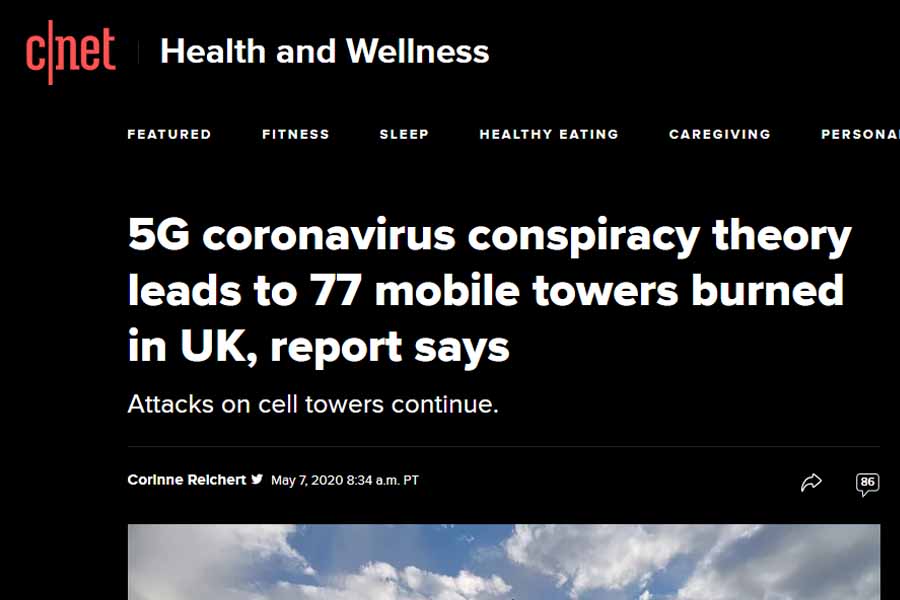
How does a cellular network work?
First of all, a cellular/mobile network is composed of multiple overlapping geographic areas arranged in a hexagonal structure, each with its own “base station” at the center. Such areas are called “cells”, which is a skeuomorphic naming convention, similar to how cells in a human body are shaped & their inter-connectedness. The reason these cells overlap is to ensure that a subscriber always remains within a range of any base station. And ultimately, it also facilitates radio coverage over a wide area.[caption id="attachment_83808" align="alignnone" width="900"]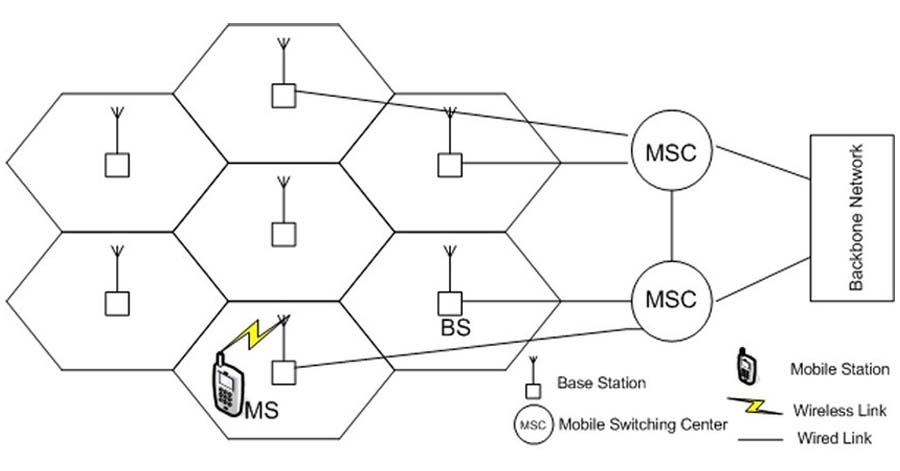
Enter, wireless telephone technology!
Measured in megahertz (MHz) or gigahertz (GHz), a frequency spectrum refers to the range of electromagnetic radio frequencies used to transmit data packets through the air. And these are typically grouped in ranges called “bands”. The first generation of the wireless cellular network (or 1G) developed in the late 70s, encoded analog signals into frequency band, using 150MHz of UHF (Ultra High Frequency) waves.Similarly, its successor, 2G went full-digital with services like text messages, images & MMS being digitally encrypted. This meant that now only the receiver & sender can read the data. 2G also introduced mobile data with a theoretical maximum transfer speed of 40kbit/s under GPRS & 384kbit/s under the EDGE system. It used the 450MHz frequency band (CDMA450) which still falls under the UHF waves of the electromagnetic spectrum.[caption id="attachment_83809" align="alignnone" width="900"]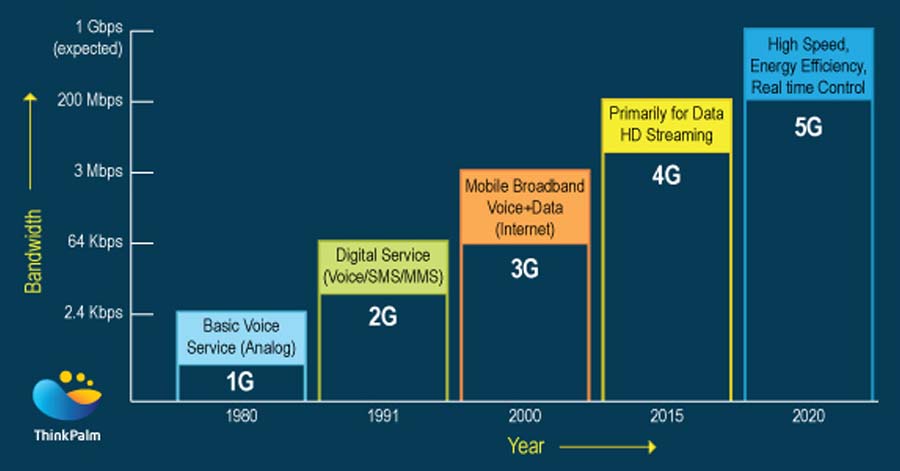
5G and its traits
And now we have 5G. It is a direct result of the industry’s deadlock on increasing speed using the existing frequency bands. It promises far faster download speeds, reduced latency, and increased bandwidth.Passing vehicles can travel at great speeds, there is a substantially reduced possibility of a traffic-jam, and more vehicles can pass through at a time. Because of its sheer speed & other benefits, 5G is expected to be useful in areas beyond cellphones. For example; M2M (Machine to machine) communication for autonomous vehicles, IoT devices, and other sensitive industries like health, agriculture, stock market, etc.[caption id="attachment_83806" align="alignnone" width="900"]For example, if 4G & previous generations of the cellular network are a one-way road with busy traffic, 5G is an 8-lane highway.
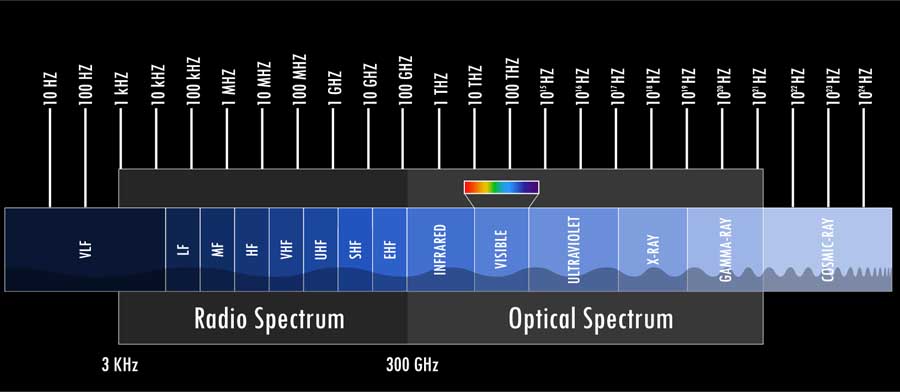
"The problem of being faster than light is that you can only live in darkness."
Because of this, mmWave 5G can achieve insane download speeds of up to 1 to 3gbit/s. Unfortunately, it has a very limited per-cell-tower range of around 1 mile, and the signal is also highly susceptible to be blocked due to factors like rain attenuation, buildings, windows, or even your own hands if it’s blocking the antenna on your phone. So, companies have to install numerous “small cells,” which is basically a low-powered wireless transmitters & receivers to boost the 5G network coverage in small & densely populated areas. These are installed indoors, or outdoors on lamp posts, walls, electric poles, etc.Also Read: Everest Base Camp now equipped with 5G coverage5G Conspiracy Theory #1: It is the source of COVID-19
And equipment like these are exactly what the anti-5G activists are burning down in different countries like England, Netherland, Belgium, Croatia, and the USA. Their point is that because high-band 5G uses high-frequency/high-energy waves, it may be somehow linked to COVID-19. That’s preposterous! The World Health Organization (WHO) has already confirmed that the virus is transmitted through respiratory droplets from an infected individual when they sneeze, cough, or speak. And it CANNOT travel through radio waves or any other waves in the electromagnetic spectrum. Case closed.
5G Conspiracy Theory #2: It welcomes the dangers of radiation
Another area of concern pointed out is the amount of radiation from 5G signals. Simply put, radiation refers to the energy emitted in the form of electromagnetic waves (light) or particles (photons). Naturally, our mind has been, in a way, conditioned into think of radiation as something that causes an ungodly level of harm and destruction.However, there are two classifications of radiation based on their wavelength & energy-level. Ionizing, and non-ionizing radiation.Madame Curie’s death, Chernobyl nuclear disaster, etc. have filled our hearts with terror. And an unpleasant image regarding radiation has been plastered into our brains.
Ionizing Radiation
These have very short wavelength/high frequency and thus high energy. Such energy is sufficient to produce ions in the matter at a molecular level. What this means is that, when exposed to a human subject, ionizing radiation can cause significant damage; including but not limited to damage of DNA and denaturation of proteins. Gamma-ray, PET scan, X-ray, Airport security scanner, UV rays from the Sun are some sources of ionizing radiation.Non-ionizing Radiation
Similarly, non-ionizing radiation has a much longer wavelength/low frequency and therefore lower energy. While not as harmful as the one above, it can still cause a certain level of damage when exposed in a concentrated volume. The effect of these radiations is mostly thermal, in the form of skin burns. These are emitted by everyday items like power lines, visible light, radiofrequency & microwave frequency (from cell phones), AM radio, infrared, etc. We live around them every day and here we are; no radiation poisoning, no brain damage, nothing.[caption id="attachment_83805" align="alignnone" width="900"]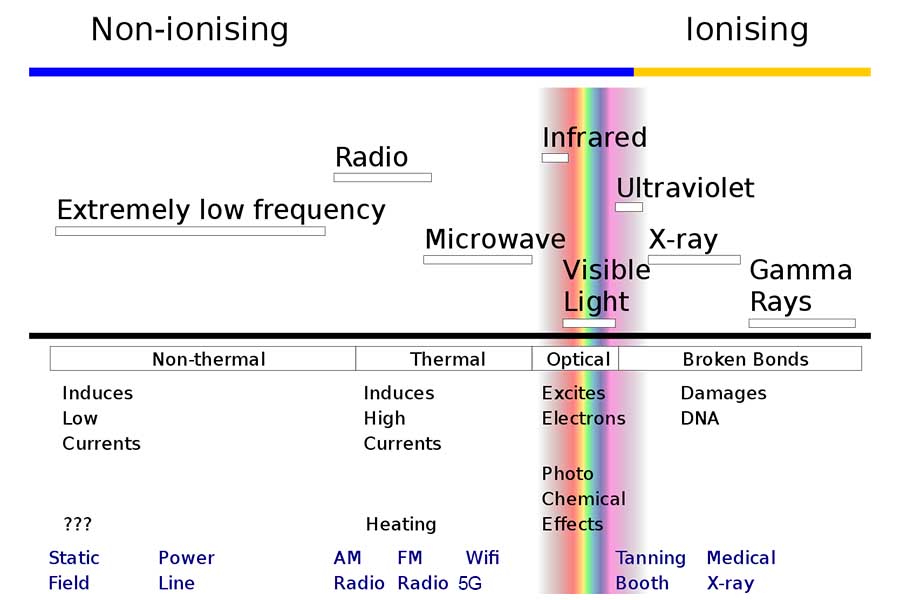
5G Conspiracy Theory #3: Other health hazards
Additionally, the internet & social media have directly fueled the spread of anti-5G propaganda as there are little measures against the spread of false news. If you remember a couple of years back, there was a viral news article circulating around Facebook; it claimed that a 5G cellular network test led to the death of hundreds of birds in the Netherlands. Turns out, that's a blatant lie.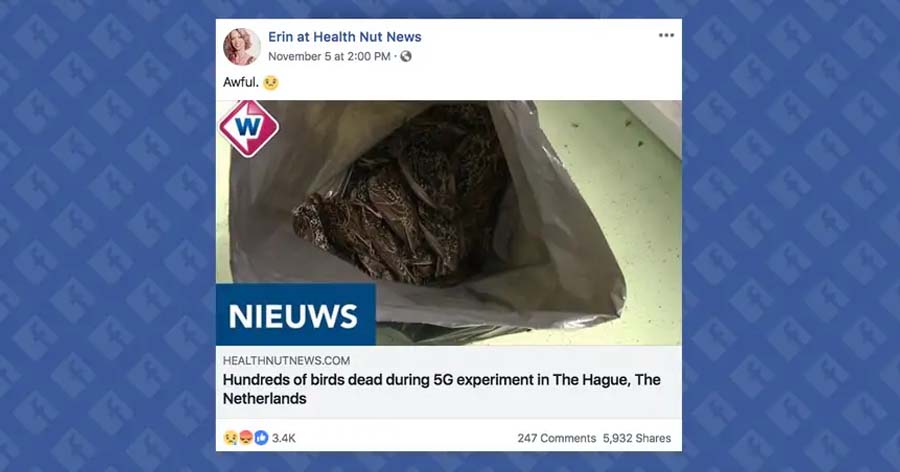
Most people have tendencies to take the headline of an article as-is and form a verdict on their mind; without giving so much as a second thought. That’s a dangerous practice and as I said earlier, social media are the perfect grounds for it to flourish. Unless you have electromagnetic hypersensitivity (EHS) like Chuck McGill (from AMC's Better Call Saul); there is no reason to fear 5G.Word gets around, more and more people believe in such fake news, and voilà; your cult is ready!
Wrapping it all up!
So what can we learn from all this? First and foremost, 5G is not dangerous to human or animal health. It’s that plain and simple. There is absolutely zero health hazard it brings to humanity. 5G is the next step in cellular network technology; one which is of great importance to the development of countless other industries as well. It does have its flaws, but in no way should the public actively seek to destroy its unfulfilled legacy. Blindly believing in some random person’s hearsay, without doing your own research is no good.Having said that, I’m not discouraging anyone from embracing an incompatible viewpoint. Yet, such conspiracy theories shouldn’t in any way, result in some sort of out-of-law activities that has a direct impact on the development of 5G infrastructure. It is still in its infancy. Imagine how much of a nuisance it would be for companies investing in the tech if people actively started revolting & being violent against it.
To say something about myself, I have been writing tech and gadgets from 2021. Although coming from a non technical studies background, I'm someone who is always fascinated by the latest gadget and tech innovations, circling around. Besides writing, you'll find me listening music and aligning the stars through astrology and sometimes even, tarot cards! 😉🧿
Comments
No comments yet. Add a comment to start a discussion





